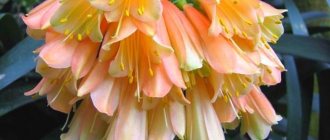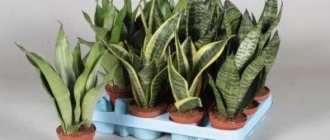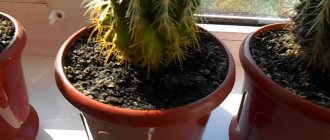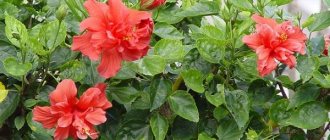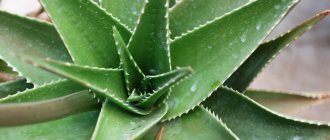Wisteria (translated from Greek as “sweet”) also has another name – Wisteria.
Its homeland is East Asia.
This perennial plant from the legume family, reaching a height of 3-4 meters, serves as an excellent decoration for gardens and parks.
Without pruning, this flowering vine wraps around the facades of houses, gazebos, and fences, reaching a length of 18 meters.
Blooms in spring. In late March and early April, drooping vine branches are abundantly covered with fragrant clusters of lilac, white or dark purple flowers.
In the warm regions of Crimea and the Caucasus, Wisteria overwinters without shelter.
In colder places, Wisteria is grown mainly indoors.
Features of care
When you first meet the plant, it is difficult to determine whether wisteria is a tree or a shrub. Neither one nor the other. It is a vine, but it can grow as a shrub or as a tree. Flexible shoots can take any shape, wrap around supports or their own shoots.
Caring for a beauty takes time and patience.
Grows quickly, relying on its own branches, can be formed into a tree
Growing in a comfortable place, wisteria tolerates care and cultivation at home well. Basic requirements for active growth of vines:
- temperature. In the summer, pots with plants are taken out onto the balcony or into the garden. Wisteria can withstand any heat (with the proper level of humidity). In autumn, a period of rest is needed, so for several months the temperature of the exotic should not exceed 10°C. In January, with the awakening of the buds, the flower is gradually accustomed to increased heat and transferred to apartment conditions;
- the plant is light-loving, so only the southern side will provide the amount of light that is necessary for growth and flowering;
- from the beginning of the active growth period - spring, moderate watering is needed, no more than twice a week. In autumn, watering is reduced as much as possible. You need to water the plant along the edge of the pot, without eroding the soil at the base of the shoot and without exposing the roots;
Wisteria bonsai compositions are successful in indoor floriculture.
- in summer, high humidity is maintained by regular spraying of greenery and shoots. During the dormant period, this procedure is not necessary for the flower;
- The soil needs to be light, airy, easily permeable to moisture and air. The nutritional value of the soil should be high. Good soil will be made up of equal parts of turf soil, humus, high peat and river sand;
- During the period of bud formation and flowering, the plant needs additional fertilizing with mineral fertilizers once a week. During the season, the flower is watered with water with the addition of chalk.
What should I do to ensure that the vine takes root?
The development of wisteria from cuttings depends on many factors. What to do if you can’t root a vine? To ensure that the plant takes root, gardeners recommend taking into account several nuances:
- During autumn pruning, it is necessary to select planting material correctly.
- Only those cuttings that have adequately overwintered will germinate successfully.
- Pre-soaking the plant in synthetic auxins should not be ignored.
- After planting, the plant needs to be provided with diffused light, high humidity and sufficient moisture.
- If there are doubts about the sufficiency or excess of light, then to save the situation it is enough to move the box to another place.
- If the room has low humidity, it is recommended to place the box in a tray with pebbles filled with water.
Wisteria is an unpretentious plant. If you create suitable conditions for it and take care of the nutritional content of the soil, then the vine will not cause any trouble to its owners. Now you know how to grow wisteria from cuttings.
Features of winter care
For the full existence of a flower, a dormant period must be organized every year. In the fall, after all the greenery has fallen off, you need to place the pot in a cool room, reduce watering, remove fertilizing and additional moisture.
Ampelous pelargonium or geranium - growing and care at home
If the wisteria bush grows on a glazed balcony, where the temperature in winter does not exceed 10 ° C, it will survive the sleep period there remarkably well.
From the beginning of January, wisteria begins to develop leaf and flower buds. The temperature must be increased gradually. Within two weeks by moving the pot to a warmer room for a while. A sharp change in temperature will destroy the plant.
Important! Without a dormant period, wisteria stops blooming and eventually dies.
Siberia
Wisteria is incredibly beautiful. It is not surprising that absolutely everyone wants to see her. But growing wisteria in Siberia is almost impossible. Even a variety like Blue Moon, capable of withstanding forty-degree frosts, bows to the environment. In addition to a mild and warm climate, wisteria needs a long growing season. It is he who is responsible for abundant and long-lasting flowering. The climate of Siberia cannot provide the necessary conditions. Even if you get creative and grow a vine, covering and protecting it from frost (providing good shelter for the winter), and carefully ensuring that the plant does not get wet, flowering will most likely not occur. If a miracle happens, the inflorescences will be weak and isolated.
When and how does wisteria bloom?
Dipladenia (Mandevilla) - growing and care at home
The liana begins to throw out flower stalks in March-April when it awakens correctly. Flowering lasts from two weeks to two months. It all depends on the variety and conditions of detention. The shape of the flowers corresponds to the legume family, to which wisteria belongs.
Long brushes strewn with small purple flowers
The palette of wisteria is not too large: pink, blue, white or lilac waterfalls. To maintain active flowering, regular mineral feeding is needed.
general information
Wisteria or wisteria is a beautiful climbing vine that grows in East Asia and North America. It received its second name in honor of Professor Caspar Wistar. The lashes can stretch up to 20 m, and individual bushes live up to 150 years. Long feathery leaves are arranged alternately, and large decorative brushes up to 50 cm hang between them.
Wisteria leaves are quite poisonous, so it is not recommended to grow it where pets might eat it. For the same reason, the vine is not planted near water bodies, so that the leaves do not fall into the water and poison the fish. Flowering begins at the end of March, and the inflorescences are very fragrant.
Photo: w-dog.ru
Trimming
Fuchsia growing and care at home
Stimulate flowering and growth by pruning. After flowering, the shoots are cut back by two-thirds, and in February-March - to 2-3 good buds.
If wisteria is given the shape of a trunk, you need to leave one or several powerful shoots, removing all lateral and basal shoots
When growing as a vine or bush, part of the side shoots must be cut off so that the flower does not waste energy on them.
Important! In too branched areas of the shoot, flowering will be rare.
Diseases
Wisteria does not have strong disease resistance . It can be attacked by both fungi and viruses.
Powdery mildew
When attacked by fungi, the leaves become covered with an unsightly whitish layer . It is easily erased, but soon appears again.
The leaves begin to dry out and fall off, the branches become deformed, and the plant stops developing.
destroy harmful fungi: Previkur, Vitaros, Fundazol, Skor. The above-ground parts of the vine are generously treated with the selected preparation. Usually a double treatment is required.
Chlorosis
Occurs when there is a serious deficiency of iron in the soil. The leaves stop producing chlorophyll and gradually turn yellow . Only the veins remain green.
It is advisable to completely replace the soil and feed it with one of the iron preparations. You can use iron chelate, Ferrylene, Ferovit, Antichlorosis.
To make the drugs work faster, it is recommended to spray the plant from above, rather than spilling the soil.
Reproduction
To grow a new plant, you need to choose one of the following methods:
- seeds. Seeds that have previously hatched on damp gauze are sown in January in moist soil (the mixture is the same as for an adult plant). The container is covered with film or covered with glass. The soil temperature should not be lower than 23°C. After the sprouts appear, you need to slowly harden them without film and expose them to the sun. The seedlings are ready for planting in separate pots when two true leaves appear on them. Wisteria obtained from seeds is unlikely to bloom;
- propagation by cuttings is the most reliable and fastest way. Shoots 20 cm long are cut obliquely 2 cm below the last leaf bud. Root while maintaining soil moisture. It is also necessary to observe the temperature regime, as when growing seeds;
Wisteria seeds
- It is convenient for garden wisteria to reproduce by layering. If you grow it in an apartment as a vine, you can also use this method. You need to make a cut on the layering and dig it into a new pot with soil. Care for an adult plant and after a month you can check for root formation;
- It is difficult to propagate by grafting cuttings to the root system. Experienced wisteria breeders do this and most often for the garden option of breeding these magnificent vines.
Sections of one-year-old shoots are suitable for cuttings
Pests
The most harmful enemies of wisteria are clover mites and aphids.
Aphid
If the leaves begin to dry, the branches become distorted, the flowers become smaller, and the plant withers, it means that the wisteria has been attacked by a colony of aphids.
You can get rid of these small parasites using one of the modern insecticides: Fitoverm, Karate, Intavir, Actellik.
Clover mite
A small parasite with an oval body of inconspicuous green or brown color. It is very difficult to notice - the body length barely reaches 0.4 mm. An attack can be detected by characteristic external signs.
The surface of the leaves becomes covered with small light streaks, then cracks. Affected leaves become twisted.
Acaricides work great against mites, completely ridding the plant of parasites. You can use Nissoran, Sunmite, Apollo, Fitoverm, Oberon, Omite.
Possible problems in growing wisteria
During cultivation, flower growers may encounter the following difficulties:
With proper care, a lilac waterfall will become an object of admiration for many years
- lack of flowering. If the plant is well cared for and does not bloom, it means it is growing in a pot that is too spacious. With a large volume of soil, the flower will only grow its root system and greenery;
- During flowering, leaves may begin to fall abundantly. This is a sign of nutrient deficiency. More nutritious soil and fertilizing are needed;
- If the soil contains a large amount of alkali, the leaves may begin to turn yellow. This is chlorosis. Mineral fertilization of the soil will help.
Wisteria is a magnificent decoration for both the garden and the home. She will definitely make up for all the time spent on care with her beauty. In regions such as Siberia, growing a garden version will not work, so indoor wisteria is an excellent solution.
Landing rules
It is better to place the plant in a sunny place without drafts. The ideal location is the south side of the site.
Wisteria should be planted in mid-spring, after the ground has warmed up sufficiently. The soil is suitable nutritious and well drained. It is better if it is neutral or slightly alkaline soil.
To plant seedlings, you need to prepare a hole 60 cm deep, and add mineral fertilizer to the bottom. After planting, the plant is watered well. The adaptation period lasts about three years.
